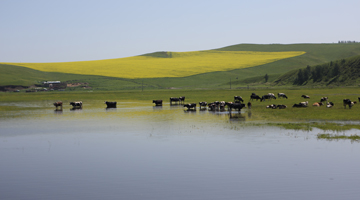Hohhot
Hohhot Overview
-
Since the Ming era, Hohhot was a small Buddhist settlement, until it became the capital of Inner Mongolia in 1952. It has kept some of its charm, visible in traditional mud-brick houses, a few temples and an excellent museum. The surrounding grasslands and the traditional way of life is the most impressing part.
What to see
-
The Inner Mongolia Museum gives an interesting insight into the history and traditions of the Mongolian people.
The attractive Great Mosque is best known for its fusion of both Chinese and Arab architectural influences. It is an active place of worship, reserved for Muslims.
The Xilitu Zhao (Xilitu Temple), a Tibetan-Buddhist temple, became the spiritual home of the 11th Grand Living Buddha in 1735. Since then, it has served as the official residence of successive reincarnations of the Grand Living Buddha. The temple is still active and the monks here are friendly and speak English.
Da Zhao, the largest Buddhist temple in the city, was originally built in 1579, and most recently renovated during the 1990s. An astounding 3m silver Sakyamuni Buddha is amongst the temple’s many treasures.
The Indian-style Wu Ta Si (Five Towers Temple) is one of Hohhot’s most attractive buildings. The distinctive five pagodas surmount a solid-looking base that contains a smallish temple with over 1,500 images of the Buddha carved into its walls.
The Bai Ta (White Pagoda) has a seven-storied, octagonal structure. Over 50m high, and made of wood and brick, it has some striking carvings of Chinese mythology and nature, including coiled dragons, flowers, and birds.


 Hulun Buir Grassland, Inner Mongolia & Russian Village
Hulun Buir Grassland, Inner Mongolia & Russian Village Homestay in Herdsman's Yurt, Xilin Gol Inner Mongolia Grassland
Homestay in Herdsman's Yurt, Xilin Gol Inner Mongolia Grassland Aershan National Forest and Hulunbuir Grassland
Aershan National Forest and Hulunbuir Grassland Camel-riding & Camping in Mongolian Desert and Jeep Surfing Sand Dunes
Camel-riding & Camping in Mongolian Desert and Jeep Surfing Sand Dunes



